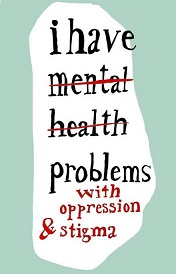A brief Psychological Reflection: The Chains of Addiction, Pt. 2
Introduction:
In my first post I explored some of the reasons why people struggle to break the bonds of addiction. We discussed, briefly, the various aspects of cognition (mind and thought) that seem to strengthen destructive behaviour associated with addiction. We also looked at how an individual’s mindset, if negative, may help in maintaining addiction, or even worsening it. For today’s post I want to look at addiction from an outsider’s perspective. Not necessarily our understanding thereof, but how family, friends and strangers may view addicts negatively, and how stigma can affect an addicts potential for recovery.
Social psychology is concerned with, in the simplest terms, the social side of life. Baron et al (2009) describes social psychology as the study of the nature and causes of individual behaviour and thought in social interactions. A part of social psychology seeks to determine how individuals perceive others and what information they use to form their understanding and impressions.
In terms of addiction, we can apply these lenses to understand how social stigma and individual attitude may contribute to perpetuating flawed beliefs about addicts and addiction and how this in turn affects an addicts motivation to seek help.
Stigmas:
Individuals with mental disorders or often labelled or “stigmatized”. Stigmas perpetuate misinformation, negative attitudes and general prejudice towards things that aren’t understood. In psychology a mental health stigma refers to negative, prejudiced ideas towards individuals suffering mental disorders. These people are often judged and ridiculed for the psychiatric diagnoses they recieve. When people are judged by others, we call it social stigma (Davey, 2013). The World Health Organization states that stigma is a major cause of discrimination and exclusion (W.H.O, accessed: 2018/03/04).
On the other hand, individuals may internalize their perceptions of being judged according to stigmas and the associated discrimination. This is called self-stigma. Not only are mental health stigmas widespread and common, they can lead to poorer treatment outcomes. In terms of assisting people in addiction, it is thus important to note how the attitudes of others can affect recovery (Davy, 2013). People use stigmas when they not only lack understanding and insight but also compassion. Stigmas affect our perceptions of others and how we treat and relate to them. In a family setting, stigma around drug addiction could mean that caregivers do not seek the necessary help for their children because they feel ashamed and embarrassed.
Social Attribution:
The process of trying to understand other people’s behaviour and pinpointing their personalities is called attribution. Although there are many theories that intricately explain attribution processes, this post provides a general overview of some of the core concepts.
Psychologists explain that observing others’ behaviour allows us insight into their stable dispositions. Stable dispositions refer to character traits that are consistent over time and don’t easily change. When we try and understand other people we usually consider a combination of dispositions (internal) and environmental (external) circumstances.
Although people possess stable, inherent traits, environmental factors might demand a change or conformity in their behaviour for a specific amount of time (Baron, 2009).
We also identify noncommon effects: behaviours that can only be produced by a particular cause / situation and nothing else. Because noncommon effects are usually quite personal or individualistic, one act or behaviour might reveal information that relates to core or fundamental dispositions. If a behaviour seems out of place or even inappropriate (like substance abuse) a person might conclude that the addict possesses overly negative and flawed dispositions- ‘’he’s a bad person’’. When family members are exposed to these noncommon behaviours, they might kick the addict out of the house (Baron, 2009).
Fritz Heider (1958) proposed that all humans act as “amateur psychologists” when they try to understand other people. If people view addiction as a choice (internal) they might entertain little to no sympathy or support for the addict. Jones and Davis (Baron, 2009) explained that we learn more about people through their unusual behaviours than through expected, predictable and common behaviour. If this is the case, then addict behaviour (inherently unusual) may be identified, negatively labelled and individuals even branded. If family members hold this view they might tell an addict to ‘’just stop using’’, which in most cases is impossible without therapeutic intervention. However, seeking help becomes increasingly difficult when even healthcare providers foster negative views about drug-users (Howard & Chung, 2000).
Correspondence Bias
The correspondence bias explains how mental health stigmas negatively affect people with addiction disorders. The correspondence bias explains that people associate behaviour to dispositions (internal factors / traits) despite clear external factors being present. Even when there are clear situational causes, people view dispositions as the most important contributing factor to a person’s behavior. The correspondence bias explains that we blame people as the makers of their problems and Baron et al (2009) goes as far as to state that we tend to perceive others as acting the way they do because they are “that kind of person”.
“He’s an alcoholic, there’s just no hope for him”.
The correspondence bias make it difficult for addicts to seek help because they may feel that their problems, stemming from external factors, are insignificant. A history of (e.g) sexual abuse, cannot be ignored when trying to understand addictive behaviour. Usually we are unaware of these external factors, but that just makes it all the more necessary to open communication with addicts.
Implicit Personality Theories
Implicit personality theories explain that people possess schemas, or frameworks of information, which explain that certain characteristics and attributes automatically go together. A simple illustration of this is the belief (in some cultures) that physically attractive individuals must also possess attractive personalities (Wheeler & Kim, 1997). The problem arises when a person holds a negative, possibly stigmatizing view about addicts.
Once a person is identified as an (e.g) alcoholic, implicit personality theories explain that certain characteristics and attributes must define the addict (lying, stealing, dangerous, etc.).
The tendency to assume that certain traits and characteristics go together are common (Baron et al, 2009) and can perpetuate stigmas about addiction. A study by Johns Hopkins Bloomberg School of Public Health showed that people tend to have more negative attitudes towards addicts than people dealing with mental illnesses (John Hopkins Hub, 2014) illustrating the power of implicit personality theories.
In conclusion:
Although this post looks at how we perceive others, we need to realize that these processes are vulnerable to having stigmas applied to them. The nature of addiction makes it easily stigmatized. The media has done an outstanding job at promoting negative mental health stigmas and in response, campaigns like ‘Time to Change” seek to address and stop the media from perpetuating false ideas.
Stigmas surrounding addiction make it difficult for family members of addicts, and addicts themselves to even admit they have a problem, not to mention seeking help. In this post, attribution theories help in identifying our shortcomings with social perception and understanding others and especially addicts. If we judge, like Heider stated, as amateur and naive psychologists, we merely perpetuate misinformation and prejudice. Although addicts need to be kept responsible for their behaviour and consequences thereof, society needs to readjust its perception on dealing with addiction.
Sources:
Baron, A & Byrne, D. (1997). Social Psychology: Understanding Human Interaction. 6th Ed.
Graham C.L. Davey Ph.D. (2013). Why We Worry, Mental Health & Stigma. psychologytoday.com/blog/why-we-worry/201308/mental-health-stigma. [accessed: 2018/03/04].
Heider, F. (1958). The Psychology of Interpersonal Relations. New York: John Wiley and Sons, Inc.
Howard, M. O., & Chung, S. S. (2000). Nurses' attitudes toward substance misusers. I. Surveys. Substance use & misuse, 35(3), 347-365.
Johns Hopkins HUB. (October 1, 2014). DDrug addiction viewed more negatively than mental illness, Johns Hopkins study shows.
Ladd Wheeler, Youngmee Kim (1997). What is Beautiful is Culturally Good: The Physical Attractiveness Stereotype has Different Content in Collectivistic Cultures. Personality and Social Psychology Bulletin, 23.





Being A SteemStem Member
Hey,
Thats a nice take on the social factors of addiction. Another factor worth mentioning though are the effects of social defeat, which is also a serious health risk. This goes back to learned helplessness models, where animals such as mice and dogs were conditioned to accept electric shocks. If you exposed them long enough, the animals would learn that avoiding bad circumstances was futile. In a similar sense, addicts may learn that they will always be an addict due to the stigmas in their envoironment.
Also do you know the rat park experiments conducted by Bruce Alexander?
Thanks for taking the time to read my post and provide some feedback. Excellent point on the learned helplessness, could definitely have included that in the post. Even the family members of addicts can be affected by this as they come to believe that there's just no hope- the person keeps relapsing, etc.
As on the rat park experiment, thanks for sharing the link. I haven't actually seen it and it raises some good points. The importance of social isolation and feelings thereof are interesting. Thanks for taking the time to comment, always appreciate an outsider's insight. Also, I learnt something :) thus I am thankful for you popping in.
To hear the speech version of this post click the play image.

Brought to you by @tts. If you find it useful please consider upvote this reply.
Congratulations @rionpistorius! You have completed some achievement on Steemit and have been rewarded with new badge(s) :
Click on any badge to view your own Board of Honor on SteemitBoard.
For more information about SteemitBoard, click here
If you no longer want to receive notifications, reply to this comment with the word
STOP